The importance of a sleeping pad
When sleeping heat is lost to the ground very rapidly. Sleeping pads are there to slow down the heat loss. Even though you have a sleeping bag your body crushes the insulation making it less effective. The job of a sleeping pad is to keep you off of the ground. The further away from the ground the better. Pads stop conductive (the fastest form of heat transfer) heat loss from happening.
Types of sleeping pads
Closed cell - Dense foam filled with little air bubbles.
Examples:
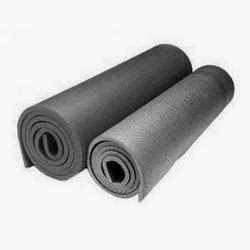
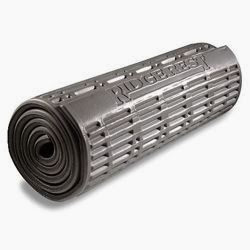
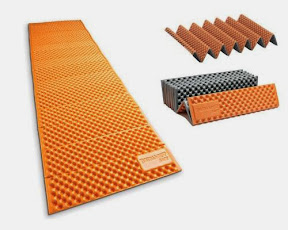
Open cell - Low density foam mainly designed for comfort
Examples:


Air - Tubes that you manually fill with air.
Examples:
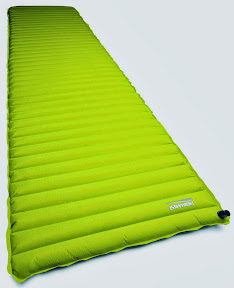
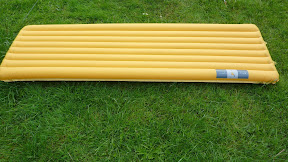
Air bed - The big thick kind that are made to mimic beds at home
Examples:
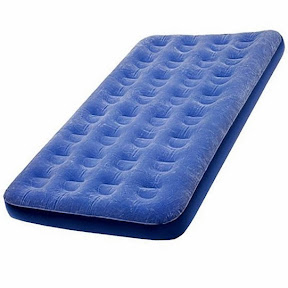

Self inflating - An air pad with open cell foam inside. The valve is opened and the foam expands and draws air into the pad.
Examples:
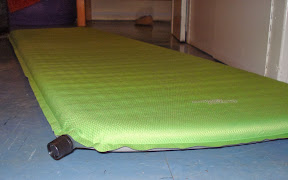


Closed cell
Pros
- Light weight
- Does not absorb water
- Really cheap
- Nearly indestructible
- Easy to customize
Cons
- Bulky
- Not as comfortable

Open cell
Pros
- Lightweight
- Comfortable if thick
- Mid range in price
- Durable
Cons
- Compresses underbody similar to sleeping bag insulation
- Absorbs a lot of water
- Breaks down over time
- Bulky

Air
Pros
- Light
- Comfortable
- Very compressible
- Can be very thick for low weight and pack volume
- Some have insulation in tubes for 4 season warmth
- Water proof
Cons
- Can be expensive
- Not as durable
- No insulation if punctured
- Convective heat loss can occur
- Requires effort to inflate

Air Bed
Pros
- Cheap
- Very thick
- Home bed “feeling”
- Water proof
Cons
- Least durable of them all
- Cheap construction
- Heavy
- Requires a lot of volume to inflate

Self Inflating
Pros
- Easy to inflate
- Low bulk
- High warmth to weight ratio
- Some insulation if punctured
- Fairly durable
- Water proof
Cons
- Expensive
- Can be punctured
- Some types can be bulky
Warmth ratings
- Sleeping pads are rated using R-value. The “R” is for resistance to heat transfer.
- R-values generally rate from 1 to 12
- A thin summer rated pad will have a lower number. Winter pads will have a higher number.
- Thicker generally means higher R-value when compared to similar designed pad.
- All insulation is designed to slow heat transfer. The slower the heat transfers the warmer you will be.
Size of pad
Length
On a spec sheet
- A short will be 48”
- A women will be 66”
- A regular will be 72”
- A long will be 78”
Width
On a spec sheet
- A regular will be 20”
- A large will be 25”-28”
- An Xl will be 28”-30”
Considerations
· Pads can be combined to achieve the wanted R-value. Many people will combine a closed cell foam pad and an air or self-inflating pad. While it seems like you should put the closed cell pad under the air pad it is actually better to put the closed cell pad on top of the air pad. It will be warmer that way.
· If you have an inflating pad of any type you can take a repair kit with you.
· Remember to properly store your pads. Inflatable and self-inflating pads should be stored unrolled with the valve open. Under your bed is a really good place to store them. Closed cell pads can be stored rolled up, but they will “remember” the shape they are stored in and be harder to unroll when you get to can and resist laying flat. All camping gear should be stored out of direct sunlight. Open cell pads are particularly susceptible to UV damage. Cats will claw your pad.
· You can make your sleeping experience more comfortable by wading up a jacket or similar and placing it above or below the pressure point. If your pressure point is your hip put the wad above your hip at the waist. It will relieve a lot of the pressure on your hips. If the pressure is on your tailbone put the wad in the small of your back.
When sleeping heat is lost to the ground very rapidly. Sleeping pads are there to slow down the heat loss. Even though you have a sleeping bag your body crushes the insulation making it less effective. The job of a sleeping pad is to keep you off of the ground. The further away from the ground the better. Pads stop conductive (the fastest form of heat transfer) heat loss from happening.
Types of sleeping pads
Closed cell - Dense foam filled with little air bubbles.
Examples:



Open cell - Low density foam mainly designed for comfort
Examples:


Air - Tubes that you manually fill with air.
Examples:


Air bed - The big thick kind that are made to mimic beds at home
Examples:


Self inflating - An air pad with open cell foam inside. The valve is opened and the foam expands and draws air into the pad.
Examples:



Closed cell
Pros
- Light weight
- Does not absorb water
- Really cheap
- Nearly indestructible
- Easy to customize
Cons
- Bulky
- Not as comfortable

Open cell
Pros
- Lightweight
- Comfortable if thick
- Mid range in price
- Durable
Cons
- Compresses underbody similar to sleeping bag insulation
- Absorbs a lot of water
- Breaks down over time
- Bulky

Air
Pros
- Light
- Comfortable
- Very compressible
- Can be very thick for low weight and pack volume
- Some have insulation in tubes for 4 season warmth
- Water proof
Cons
- Can be expensive
- Not as durable
- No insulation if punctured
- Convective heat loss can occur
- Requires effort to inflate

Air Bed
Pros
- Cheap
- Very thick
- Home bed “feeling”
- Water proof
Cons
- Least durable of them all
- Cheap construction
- Heavy
- Requires a lot of volume to inflate

Self Inflating
Pros
- Easy to inflate
- Low bulk
- High warmth to weight ratio
- Some insulation if punctured
- Fairly durable
- Water proof
Cons
- Expensive
- Can be punctured
- Some types can be bulky
Warmth ratings
- Sleeping pads are rated using R-value. The “R” is for resistance to heat transfer.
- R-values generally rate from 1 to 12
- A thin summer rated pad will have a lower number. Winter pads will have a higher number.
- Thicker generally means higher R-value when compared to similar designed pad.
- All insulation is designed to slow heat transfer. The slower the heat transfers the warmer you will be.
Size of pad
Length
On a spec sheet
- A short will be 48”
- A women will be 66”
- A regular will be 72”
- A long will be 78”
Width
On a spec sheet
- A regular will be 20”
- A large will be 25”-28”
- An Xl will be 28”-30”
Considerations
· Pads can be combined to achieve the wanted R-value. Many people will combine a closed cell foam pad and an air or self-inflating pad. While it seems like you should put the closed cell pad under the air pad it is actually better to put the closed cell pad on top of the air pad. It will be warmer that way.
· If you have an inflating pad of any type you can take a repair kit with you.
· Remember to properly store your pads. Inflatable and self-inflating pads should be stored unrolled with the valve open. Under your bed is a really good place to store them. Closed cell pads can be stored rolled up, but they will “remember” the shape they are stored in and be harder to unroll when you get to can and resist laying flat. All camping gear should be stored out of direct sunlight. Open cell pads are particularly susceptible to UV damage. Cats will claw your pad.
· You can make your sleeping experience more comfortable by wading up a jacket or similar and placing it above or below the pressure point. If your pressure point is your hip put the wad above your hip at the waist. It will relieve a lot of the pressure on your hips. If the pressure is on your tailbone put the wad in the small of your back.
Last edited:
